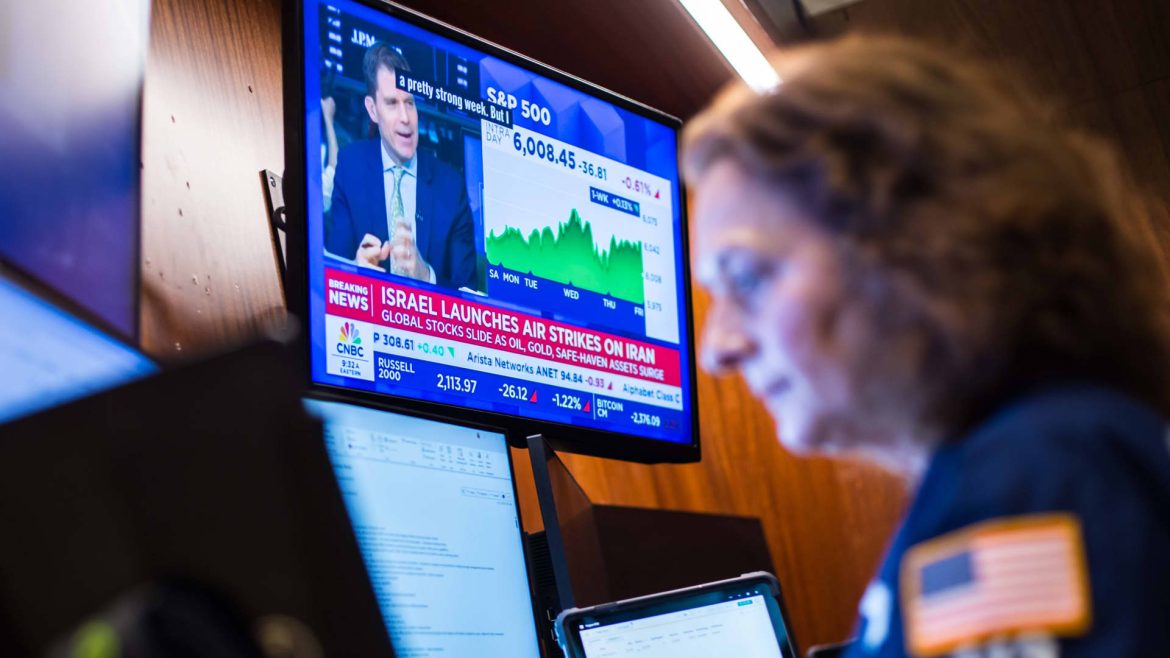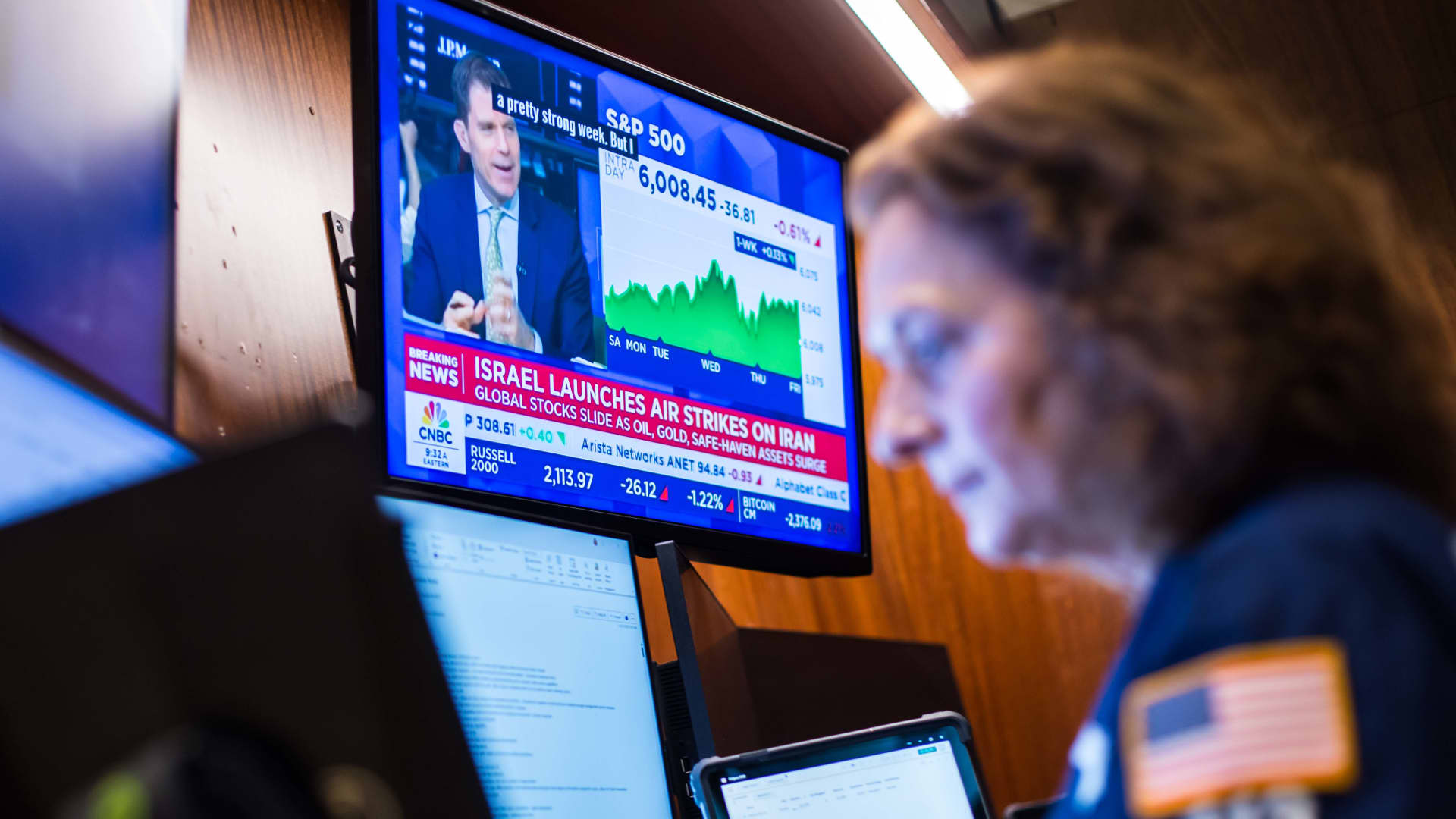The recent escalation of conflict between Israel and Iran has triggered swift and pronounced reactions across global financial markets, illustrating the delicate balance between geopolitical events and economic performance. This report delves into the complex interplay observed in stock markets, commodity prices, and investor sentiment in response to the military exchanges between these two nations.
Geopolitical Tensions as a Catalyst for Market Volatility
The sudden escalation, marked by Israel launching attacks on Iranian nuclear and military sites followed by retaliatory strikes from Iran, introduced a significant element of uncertainty to global markets. This unpredictability generally triggers risk-averse behavior among investors, leading to immediate sell-offs in equities and increased demand for traditional safe havens such as gold and government bonds.
Impact on Stock Markets: A Clear Downtrend
Across the board, US stock indices have experienced noticeable declines in reaction to the conflict. The Dow Jones Industrial Average dropped approximately 2.4% over the week, with the S&P 500 and Nasdaq also retreating by 1.6% and 0.5%, respectively. Sector analysis reveals divergent impacts: energy companies saw gains aligned with rising oil prices, while technological and chemical sectors experienced sell-offs, reflecting broader investor apprehension about economic disruption.
The sell-off erased recent gains and punctuated an already cautious market environment that had been demonstrating signs of strain amid inflation concerns and potential Federal Reserve policy adjustments.
Surge in Oil Prices: Fear of Supply Disruptions
The most immediate commodity reaction was a sharp surge in crude oil prices, with benchmarks like Brent crude and West Texas Intermediate (WTI) registering increases exceeding 7% at their peak. Prices climbed over $90 per barrel, driven by market fears surrounding potential supply disruptions through critical waterways such as the Strait of Hormuz, a vital artery for global oil shipments.
The sharp escalation led to heightened volatility in energy markets, with traders anticipating constrained supply and increased production risks as hostilities threaten regional stability.
Gold and Treasuries Rally Amid Flight to Safety
Concurrent with soaring oil prices and tumbling stocks, gold prices advanced significantly, reinforcing its role as a traditional safe-haven asset during periods of geopolitical uncertainty. Similarly, yields on US 10-year Treasury notes declined, reflecting increased demand for government debt amid investor flight to safety.
The Treasury yield drop, from 3.79% to 3.73% in a short timeframe, underscores the market’s prioritization of capital preservation over yield in times of conflict-induced volatility.
Regional Market Repercussions: Israeli and Middle Eastern Indices
Israel’s domestic indices, such as the TA-35 and TA-90, fell by approximately 3.2% and 7.1%, respectively, indicating profound market anxiety amid the immediate proximity of the conflict. The shekel also weakened, pressured by fears of a broader regional escalation and potential economic disruptions.
Similarly, European chemical shares and other equities suffered declines, signaling that the repercussions of the Israel-Iran conflict are not confined regionally, but ripple across international markets.
Inflation and Macro Dynamics: A Contrasting Influence
Amid this turmoil, investors were simultaneously navigating a backdrop of more favorable inflation data released earlier in the week, which had provided some optimism. However, the geopolitical shock appeared to overshadow these positive signals, causing markets to recalibrate risk and expected trajectories for economic growth and monetary policy.
The conflict injects uncertainty into the inflation outlook, as higher oil prices could exacerbate inflationary pressures, potentially forcing central banks to maintain or intensify their tightening stance.
Investor Sentiment and Market Psychology
The market’s fear gauge, the VIX index, spiked to near one-month highs, reflecting widespread investor anxiety and uncertainty about the trajectory of the conflict and its economic implications. Volatility surged as traders grappled with rapid developments and their potential to escalate into a broader conflict, disrupting global economic recovery.
This period illustrates classic geopolitical shock dynamics, where sudden military events prompt abrupt risk-off moves, flight to safe assets, and sharp commodity price swings.
Conclusion: Navigating Uncertainty in a Fragile Environment
The Israel-Iran conflict has exposed financial markets to a powerful and immediate geopolitical shock, triggering a complex response characterized by falling stocks, rising oil and gold prices, and a flight to safety in government bonds. The incident reinforces how quickly global markets can shift in the face of geopolitical tensions, especially in regions critical to energy supply.
Investors are left balancing cautious optimism from recent inflation developments with heightened risk perceptions stemming from the conflict. The path forward remains uncertain, contingent upon developments on the ground and diplomatic efforts to de-escalate hostilities. For global markets, vigilance and adaptability will remain key in managing the evolving landscape shaped by this geopolitical flashpoint.





